Ditapis dengan

Benchmarking Russian and Finnish food industry supply chains
The purpose of this paper is to examine the differences between Finnish and Russian, namely Karelian, food industry supply chains. The main objective is to find out the reasons for low productivity in Russian food industry from supply chain management (SCM) point of view.
- Edisi
- Vol. 16 No. 3, 2009
- ISBN/ISSN
- -
- Deskripsi Fisik
- 19 p.
- Judul Seri
- Benchmarking: An International Journal
- No. Panggil
- ATC LO TOU b

Problems in the onward and upward phase of APS system implementation
Studies conducted on advanced planning and scheduling (APS) systems have found problems in the marginal or negative returns from APS systems when they are implemented inmmanufacturing planning and control processes. The purpose of this study is to examine what problems exist in the onward and upward phase of the APS system implementation and how the individual, technical and organizational (ITO…
- Edisi
- -
- ISBN/ISSN
- -
- Deskripsi Fisik
- 23 p.
- Judul Seri
- -
- No. Panggil
- ATC LO IVE p

Building humanitarian supply chain relationships: lessons from leading practi…
The purpose of this paper is to advance thought and practice on supply chain relationship building, in the context of humanitarian logistics, drawing on lessons from leading practitioners.
- Edisi
- Vol. 1 No. 1, 2011 pp. 32-49
- ISBN/ISSN
- -
- Deskripsi Fisik
- 21 p .
- Judul Seri
- Journal of Humanitarian Logistics and Supply Chain Management
- No. Panggil
- ATC LO LAC b
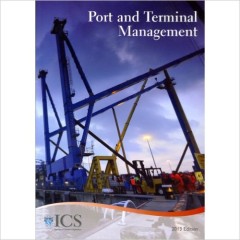
Port and terminal management
With global trade at unprecedented levels, port and terminal managements are fast adapting to meet rising demand. Globalisation is putting port models under increasing pressure to remain competitive in fickle cargo markets. Increasing productivity ─ through expansion or better utilisation of existing assets ─ is a must for economic survival.
- Edisi
- 2013 Ed.
- ISBN/ISSN
- 978-1-90-8833-27-3
- Deskripsi Fisik
- iv, 144 p.; 30 cm
- Judul Seri
- -
- No. Panggil
- TXT PO ICS p

Economy - wide impact of a more efficient Tanjung Priok port
- Edisi
- -
- ISBN/ISSN
- -
- Deskripsi Fisik
- 19 p.
- Judul Seri
- -
- No. Panggil
- ATC PO GIN e
- Edisi
- -
- ISBN/ISSN
- -
- Deskripsi Fisik
- 19 p.
- Judul Seri
- -
- No. Panggil
- ATC PO GIN e

Modul Pelatihan Warehouse Management 26-28 September 2017
- Edisi
- -
- ISBN/ISSN
- -
- Deskripsi Fisik
- 30 p.
- Judul Seri
- -
- No. Panggil
- IPC GUI IND m
- Edisi
- -
- ISBN/ISSN
- -
- Deskripsi Fisik
- 30 p.
- Judul Seri
- -
- No. Panggil
- IPC GUI IND m
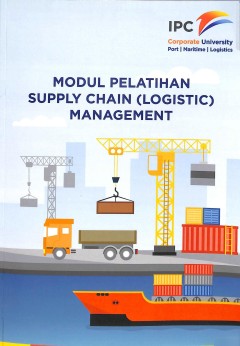
Modul Pelatihan : Supply Chain (Logistic) Management
This module is an introductory to Supply Chain Management, anad part of module of FIATA Higher Diploma in Supply Chain Management
- Edisi
- -
- ISBN/ISSN
- -
- Deskripsi Fisik
- 92 p., 29.5 cm.
- Judul Seri
- -
- No. Panggil
- IPC GUI SUP s

The influence of relational competencies on supply chain resilience: a relati…
The purpose of this research is to explore the resilience domain, which is important in the field of supply chain management; it investigates the effects relational competencies have for resilience and the effect resilience, in turn, has on a supply chain’s customer value.
- Edisi
- Vol. 43 No. 4, 2013
- ISBN/ISSN
- -
- Deskripsi Fisik
- 24 p.
- Judul Seri
- The purpose of this research is to explore the resilience domain, which is important in the field of supply chain management; it investigates the effects relational competencies have for resilience an
- No. Panggil
- ATC LO MAR t

Theoretical perspectives on information sharing in supply chains
The purpose of this paper is to explore what theoretical lenses have been used to analyze and understand information sharing in supply chains. The paper elaborates on the predominant theories and discusses how they can be integrated to research different aspects of information sharing. Design/methodology/approach – The paper carried out a structured literature review by using a combination of…
- Edisi
- 19/5/6 (2014) 609–625
- ISBN/ISSN
- 1359-8546
- Deskripsi Fisik
- 19 p.
- Judul Seri
- Supply Chain Management: An International Journal
- No. Panggil
- ATC LO KEM t

Theoritical aspects of logistics training
Authors discuss about main training needs and problems in the logistics as main driving motive for learning and training process organization in the universities and at the non-formal training places – work places, courses and training organizations. All driving motives can be named as internal and external forces which influence persons. In many cases external driving motives are related to …
- Edisi
- 2007, Vol XXII, No 1, 14–18
- ISBN/ISSN
- 1648-3480
- Deskripsi Fisik
- 6 p .
- Judul Seri
- Transport
- No. Panggil
- ATC LO PAL t

Third party logistics services- a Singapore perspective
Focusses on three constructs that we believe are the primary determinants of the future usage of third party logistics services. These constructs are: extent of use of the third party logistics services; decision making process for choosing contract logistics services provider; and impact of the usage of contract logistics services on the organisation. An empirical research was carried out in…
- Edisi
- Vol. 29 No. 9, 1999, pp. 569-587
- ISBN/ISSN
- 0960-0035
- Deskripsi Fisik
- 25 p.
- Judul Seri
- Third party logistics services
- No. Panggil
- ATC LO BHA t

Time compression in the supply chain : information management is the vital …
Claims that time compression is a powerful source of competitive advantage that remains relatively underutilized in UK busineses. Details the research undertaken by the Warwick Manufacturing Group’s time compression programme (TCP) on the applications of time‐based approaches with a number of partner companies. Explores the nature of time compression in relation to the fundamental principle…
- Edisi
- Vol. 96 Issue: 2, pp.12-16
- ISBN/ISSN
- 0263-5577
- Deskripsi Fisik
- 7 p.
- Judul Seri
- Time compression in the supply chain
- No. Panggil
- ATC LO BEE t C.1

Twenty years of IJLM: evolution in research
The purpose of this paper is to evaluate research trends observed in the International Journal of Logistics Management (IJLM) during its first 20 years of publication. Design/methodology/approach – A content analysis was conducted of the IJLM’s first 20 years of publication (330 articles in total) to identify changing trends in subject matter, use of theory, type of research methodology, an…
- Edisi
- Vol. 23 No. 1, 2012 pp. 4-30
- ISBN/ISSN
- 0957-4093
- Deskripsi Fisik
- 29 p.
- Judul Seri
- The International Journal of Logistics Management
- No. Panggil
- ATC LO TRO t C.1

Using the “documentary method” to analyse qualitative data in logistics r…
This paper aims to examine the use of a qualitative data analysis technique, the documentary method, in the development of knowledge in logistics. The value of the method is illustrated through an example of its application in a study of in-store logistics processes at six leading European retail stores.
- Edisi
- Vol. 42 No. 8/9, 2012 pp. 828-842
- ISBN/ISSN
- 0960-0035
- Deskripsi Fisik
- 17 p.
- Judul Seri
- International Journal of Physical Distribution & Logistics Management
- No. Panggil
- ATC LO TRA u C.1

Vendor-managed inventory and bullwhip reduction in a two-level supply chain
Compares the bullwhip properties of a vendor managed inventory (VMI) supply chain with those of a traditional “serially-linked” supply chain. The emphasis of this investigation is the comparative impact the two structures have on the “bullwhip effect” generated. Particular attention is paid to the manufacturer’s production ordering activities as demonstrated using a simulation model b…
- Edisi
- Vol. 23 No. 6, 2003 pp. 625-651
- ISBN/ISSN
- 0144-3577
- Deskripsi Fisik
- 34 p.
- Judul Seri
- International Journal of Operations & Production Management
- No. Panggil
- ATC LO DIS v C.1

Workplace safety in the supply chain- a review of the literature and call for…
The purpose of this paper is to review the literature and call for additional research into the human, operational, and regulatory issues that contribute to workplace safety in the supply chain.
- Edisi
- Vol. 19 No. 1, 2008 pp. 65-83
- ISBN/ISSN
- 0957-4093
- Deskripsi Fisik
- 21 p .
- Judul Seri
- The International Journal of Logistics Management
- No. Panggil
- ATC LO CAN w C.1

World-class logistics- Australia and New Zealand
This paper reports on a study of the logistics and supply chain practices of Australian and New Zealand firms.
- Edisi
- Vol. 35 No. 1, 2005 pp. 63-74
- ISBN/ISSN
- 0960-0035
- Deskripsi Fisik
- 14 p .
- Judul Seri
- International Journal of Physical Distribution & Logistics Management
- No. Panggil
- ATC LO MOL w

Environmental sustainability in the third-party logistics (3PL) industry
The purpose of this paper is to document the extent to which large third-party logistics (3PL) companies have committed themselves to environmental sustainability goals. It also aims to examine the sustainability initiatives undertaken by those companies and the impact of those initiatives on the 3PL and their customers. Finally, the research seeks to examine the impact of the global recession …
- Edisi
- Vol. 40 No. 7, 2010 pp. 524-533
- ISBN/ISSN
- -
- Deskripsi Fisik
- 14 pages
- Judul Seri
- International Journal of Physical Distribution & Logistics Management
- No. Panggil
- ATC LO LIE e

Environmental sustainability in logistics and freight transportation - A lite…
The environmental impacts of transportation are rarely brought into decision making frameworks. The purpose of this paper is to introduce a framework and tool to help in these organizational decisions
- Edisi
- Vol. 33 No. 4, 2010 pp. 317-339
- ISBN/ISSN
- 2040-8269
- Deskripsi Fisik
- 25 p.
- Judul Seri
- Management Research Review
- No. Panggil
- ATC LO GUE e C.1

Collaboration in Finnish-Russian supply chains: Effects on performance and th…
The management of international supply chains may significantly contribute to the successful outcome of exports. The purpose of this paper is to investigate the level of supply chain collaboration in an uncertain cross-border context, and whether it improves supply chain performance The moderating role of export experience and intensity to the collaboration-performance relationship is also in…
- Edisi
- Vol. 3 No. 3, 2008 pp. 246-265
- ISBN/ISSN
- 1746-5265
- Deskripsi Fisik
- 22 p.
- Judul Seri
- Baltic Journal of Management
- No. Panggil
- ATC LO LON c

Analysing the impacts of ICT on knowledge work productivity
The potential of information and communication technology (ICT) in improving knowledge work productivity is well-documented in the existing literature. However, prior research fails to provide means for analyzing whether the potential can be realized in a specific organizational context. Thus, this paper aims to focus on the context-specific analysis of the impacts of ICT services on knowledge …
- Edisi
- VOL. 17 NO. 4 2013, pp. 545-557
- ISBN/ISSN
- 1367-3270
- Deskripsi Fisik
- 17 p.
- Judul Seri
- Journal of Knowledge Management
- No. Panggil
- ATC LO PAL a C.1

The difference between elderly consumers’ satisfaction levels and retail sa…
Suggests that a significant trend affecting American society today is the dramatic rise in the number of persons aged over 65. Consequently, retailers are interested in knowing how this segment can be best served in the marketplace. Outlines a study which utilized person perception theory to examine how retail sales personnel’s perceptions relate to elderly consumers’ satisfaction. Results …
- Edisi
- Volume 25 · Number 4 · 1997 · pp. 126–137
- ISBN/ISSN
- 0959-0552
- Deskripsi Fisik
- 14 p .
- Judul Seri
- International Journal of Retail & Distribution Management
- No. Panggil
- ATC LE JOH t C.1

HRD practices and talent management in the companies with the employer brand
The employer brand could be a key factor of competitiveness for a company in acontemporary labour market. The purpose of this paper is to identify the features of human resource development (HRD) practices and talent management in companies with employer brand (CEBs).
- Edisi
- Vol. 36 No. 1, 2012 pp. 86-104
- ISBN/ISSN
- 2046-9012
- Deskripsi Fisik
- 21 p .
- Judul Seri
- European Journal of Training and Development
- No. Panggil
- ATC LE KUC h C.1

Psychosocial risk assessment in organizations: Concurrent validity of the bri…
The Management Standards Indicator Tool (MSIT) is a 35-item self-report measure of the psychosocial work environment designed to assist organizations with psychosocial risk assessment. It is also used in work environment research. Edwards and Webster presented a 25-item version of the MSIT based on the deletion of items having a factor loading of < .65. Stress theory and research suggest that p…
- Edisi
- Vol. 27, No. 4, 403–412
- ISBN/ISSN
- 1464-5335
- Deskripsi Fisik
- 11 p.
- Judul Seri
- Work & Stress
- No. Panggil
- ACT MG HOU p C.1

European Monetary Union: the need for a contingency strategy within the retai…
The decision on which countries will participate in European Monetary Union (EMU) is to take place as early as possible in 1998, with the final run-in, regarding the technicalities of introducing a single currency, starting on 1 January 1999. With this timetable in mind, examines some of the major issues which will have to be confronted by UK retailers. Even if the UK Government decides to opt…
- Edisi
- Volume 25 · Number 4 · 1997 · pp. 146–158
- ISBN/ISSN
- 0959-0552
- Deskripsi Fisik
- 15 p.
- Judul Seri
- International Journal of Retail & Distribution Management
- No. Panggil
- ATC MG ALE e C.1
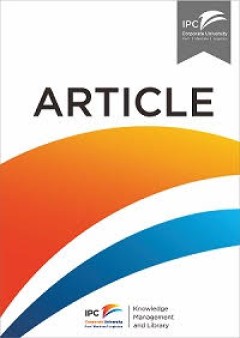
Principles of business process management
- Edisi
- Vol. 6 Issue: 6, pp. 48-52
- ISBN/ISSN
- 0960-4529
- Deskripsi Fisik
- -
- Judul Seri
- Managing service quality
- No. Panggil
- ATC MG ARM p
- Edisi
- Vol. 6 Issue: 6, pp. 48-52
- ISBN/ISSN
- 0960-4529
- Deskripsi Fisik
- -
- Judul Seri
- Managing service quality
- No. Panggil
- ATC MG ARM p

Portfolio of port-centric supply chain disruption threats
- Edisi
- -
- ISBN/ISSN
- -
- Deskripsi Fisik
- -
- Judul Seri
- International Journal of Logistics Management
- No. Panggil
- ATC MG LOG p
- Edisi
- -
- ISBN/ISSN
- -
- Deskripsi Fisik
- -
- Judul Seri
- International Journal of Logistics Management
- No. Panggil
- ATC MG LOG p

Michael Porter’s competitive advantage revisited
- Edisi
- -
- ISBN/ISSN
- 0025-1747
- Deskripsi Fisik
- 11 p.
- Judul Seri
- Management Decision
- No. Panggil
- ATC MG SHA m
- Edisi
- -
- ISBN/ISSN
- 0025-1747
- Deskripsi Fisik
- 11 p.
- Judul Seri
- Management Decision
- No. Panggil
- ATC MG SHA m

Onboarding is a change: applying change management model ADKAR to onboarding
- Edisi
- Vol. 25 Issue: 7, pp. 5-8
- ISBN/ISSN
- 0967-0734
- Deskripsi Fisik
- -
- Judul Seri
- Human Resource Management International Digest
- No. Panggil
- ATC MG KAR o
- Edisi
- Vol. 25 Issue: 7, pp. 5-8
- ISBN/ISSN
- 0967-0734
- Deskripsi Fisik
- -
- Judul Seri
- Human Resource Management International Digest
- No. Panggil
- ATC MG KAR o

Stop improvising change management
- Edisi
- Vol. 37 issue: 2, pp. 38-44
- ISBN/ISSN
- 1087-8572
- Deskripsi Fisik
- -
- Judul Seri
- Strategy and leadership
- No. Panggil
- ATC MG JOR s
- Edisi
- Vol. 37 issue: 2, pp. 38-44
- ISBN/ISSN
- 1087-8572
- Deskripsi Fisik
- -
- Judul Seri
- Strategy and leadership
- No. Panggil
- ATC MG JOR s

Risk Management in maritime logistics and supply chains
- Edisi
- pp. 117-131
- ISBN/ISSN
- -
- Deskripsi Fisik
- -
- Judul Seri
- Maritime Logistics
- No. Panggil
- ATC MG LAM r
- Edisi
- pp. 117-131
- ISBN/ISSN
- -
- Deskripsi Fisik
- -
- Judul Seri
- Maritime Logistics
- No. Panggil
- ATC MG LAM r

The managerialistic ideology of organisational change management
- Edisi
- Vol. 20 issue: 1, pp.126-144
- ISBN/ISSN
- -
- Deskripsi Fisik
- -
- Judul Seri
- Journal of Organizational Change Management
- No. Panggil
- ATC MG DIE m
- Edisi
- Vol. 20 issue: 1, pp.126-144
- ISBN/ISSN
- -
- Deskripsi Fisik
- -
- Judul Seri
- Journal of Organizational Change Management
- No. Panggil
- ATC MG DIE m

Total quality management (TQM)-an overview
- Edisi
- Vol. 17 Issue: 1, pp.15-19
- ISBN/ISSN
- -
- Deskripsi Fisik
- -
- Judul Seri
- The Bottom Line: Managing Library Finances
- No. Panggil
- ATC MG TAL t
- Edisi
- Vol. 17 Issue: 1, pp.15-19
- ISBN/ISSN
- -
- Deskripsi Fisik
- -
- Judul Seri
- The Bottom Line: Managing Library Finances
- No. Panggil
- ATC MG TAL t
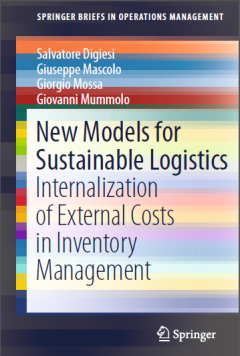
New models for sustainable logistics: internalization of external costs in in…
- Edisi
- -
- ISBN/ISSN
- 978-3-319-19710-4
- Deskripsi Fisik
- -
- Judul Seri
- -
- No. Panggil
- TXT LO DIG n
- Edisi
- -
- ISBN/ISSN
- 978-3-319-19710-4
- Deskripsi Fisik
- -
- Judul Seri
- -
- No. Panggil
- TXT LO DIG n

Multiple project management: a modern competitive necessity
- Edisi
- -
- ISBN/ISSN
- -
- Deskripsi Fisik
- -
- Judul Seri
- -
- No. Panggil
- ATC MG DOO m
- Edisi
- -
- ISBN/ISSN
- -
- Deskripsi Fisik
- -
- Judul Seri
- -
- No. Panggil
- ATC MG DOO m
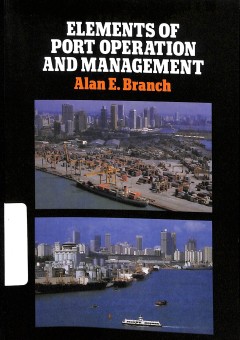
Elements of Port Operation and Management
Since the publication of my books Elements of Shipping and more recently Economics of Shipping Practice and Management, both selling in over 130 countries, I have received numerous requests both from home and abroad for a companion volume on seaports. This book has been written to provide a practical, overall under standing of the elements of port operation and management of a competitive, pr…
- Edisi
- -
- ISBN/ISSN
- 978-94-010-8313-3
- Deskripsi Fisik
- xiv, 265 p., 21 cm
- Judul Seri
- -
- No. Panggil
- TXT PO BRA e

De-commoditizing change management: A call for the re-positioning of change
- Edisi
- -
- ISBN/ISSN
- -
- Deskripsi Fisik
- -
- Judul Seri
- -
- No. Panggil
- ATC MG BRO d
- Edisi
- -
- ISBN/ISSN
- -
- Deskripsi Fisik
- -
- Judul Seri
- -
- No. Panggil
- ATC MG BRO d
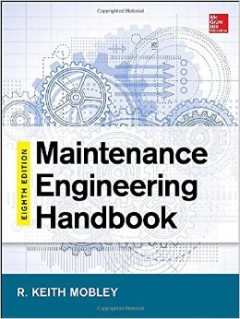
Maintenance Engineering Handbook
The Most Complete, Current Guide to Every Aspect of Maintenance Engineering Extensively updated to cover the latest technologies and methods, Maintenance Engineering Handbook, Eighth Edition offers in-depth details on identifying and repairing faulty equipment. This definitive resource focuses on proven best practices for maintenance, repair, and overhaul (MRO), inventory management, root-cause…
- Edisi
- 8th ed.
- ISBN/ISSN
- 978-0-07-182661-7
- Deskripsi Fisik
- xiii, 557p. ; 25cm.
- Judul Seri
- -
- No. Panggil
- TXT LO MOB m C.1

A business process approach to human resource management
- Edisi
- -
- ISBN/ISSN
- -
- Deskripsi Fisik
- -
- Judul Seri
- -
- No. Panggil
- ATC MG CAK b
- Edisi
- -
- ISBN/ISSN
- -
- Deskripsi Fisik
- -
- Judul Seri
- -
- No. Panggil
- ATC MG CAK b
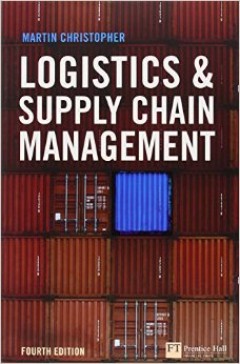
Logistics & supply chain management
When the first edition of this book was published in 1992, supply chain management as an idea was still in its infancy and relatively few companies had made it a priority. The same was true for logistics management, although its precursor, distribution management, was increasingly being recognised as important both in terms of cost and for its potential impact on sales. In the intervening yea…
- Edisi
- Fourth Edition
- ISBN/ISSN
- 978-0-273-73112-2
- Deskripsi Fisik
- xi, 269p
- Judul Seri
- -
- No. Panggil
- TXT LO CHR l
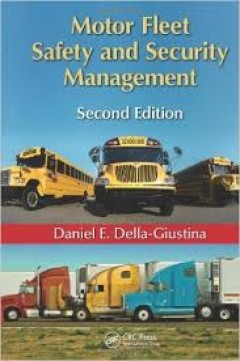
Motor Fleet Safety And Security Management
To achieve optimum safety, everyone involved in the transportation system should be adequately trained, supervised, and monitored. Proper data and incident reports must be maintained to identify trends and problem areas. Keeping the trademark style that made the previous edition so popular, the author addresses the critical steps for successful driver selection, training, instruction, and super…
- Edisi
- Second Ed.
- ISBN/ISSN
- 978-1-4398-9507-8
- Deskripsi Fisik
- xxi, 163 p., 23 cm
- Judul Seri
- -
- No. Panggil
- TXT LO DEL m

Enterprise logistics: the right tool for the job
With ever‐increasing profit and competitive pressures, manufacturers are looking toward the logistics process as a source of competitive advantage. A number of methodologies and information systems have evolved as ‘tools’ to aid in the exploitation of the potential of logistics. Many manufacturers have benefited significantly from the application of logistics tools. For others, primarily …
- Edisi
- Vol. 1 Issue: 2, pp.41-46
- ISBN/ISSN
- -
- Deskripsi Fisik
- 8 p.
- Judul Seri
- The International Journal of Logistics Management
- No. Panggil
- ATC LO WOL e
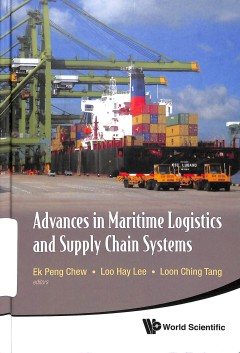
Advances in Maritime Logistik and Supply Chain Systems
This timely book discusses the recent developments in maritime logistics, an important specialized area for the global economy. It includes issues such as the recent economic crisis, port competition and development, and provides insights and trends relating to these issues. Consisting of renowned researchers worldwide, the primary objective of the book identifies some of the new problems and c…
- Edisi
- -
- ISBN/ISSN
- 13-978-981-4329-85-9
- Deskripsi Fisik
- xvi, 315 p. ; 26 cm.
- Judul Seri
- -
- No. Panggil
- TXT LO SON m

Institutional challenges to intermodal transport and logistics : governance i…
While the operational realities of intermodal transport are relatively well known, the institutional challenges are less well understood. This book provides an overview of intermodal transport and logistics including the policy background, emerging industry trends and academic approaches. Establishing the three key features of intermodal transport geography as intermodal terminals, inland logis…
- Edisi
- -
- ISBN/ISSN
- 978-1-4724-2321-4
- Deskripsi Fisik
- xx, 219 p., 23 cm
- Judul Seri
- -
- No. Panggil
- TXT LO MON i
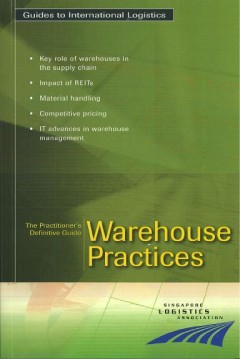
Warehouse Practices : The Practitioner's Definitive Guide
Warehouses may be as old as trading outposts in the olden days, but warehousing has since evolved into a highly sophisticated operation that features prominently in the supply chain strategy. Here at last is a timely and comprehensive guide for practitioners to the best practices in warehousing. It provides insights for beginners in warehousing and is a good quick read for someone who wants to …
- Edisi
- 3rd ed.
- ISBN/ISSN
- 978-981-4266-28-4
- Deskripsi Fisik
- 207p. ; 23cm.
- Judul Seri
- Guides to International Logistics
- No. Panggil
- TXT LO BOO w
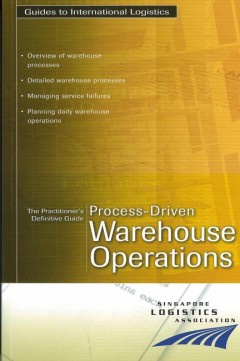
The Practitioner Definitive Guide: Process-driven Warehouse Operations
In today's highly competitive business environment, adding manpower to a warehouse to cope with the increased volume of business is no longer a solution. At some point in time, the warehouse has to migrate the operations to follow a set of structured processes and organise its people along functional lines on order to improve its service and cost effectiveness. The Practitioner's Definitive Gui…
- Edisi
- -
- ISBN/ISSN
- 978-981-4266-70-3
- Deskripsi Fisik
- 222p, : 23cm.
- Judul Seri
- Guides to International Logistics
- No. Panggil
- TXT LO BOO p
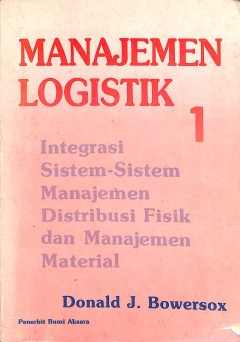
Manajemen Logistik 1
Buku manajemen Logistik disajikan sebagai suatu perpaduan sistim-sistim manajemen distribusi fisik, manajemen material dan transfer persediaan internal. Buku ini memuat tentang manajemen logistik terpadu yang meliputi manajemen logistik, sistem logistik, operasi logistik dan koordinasi logistik. Selain itu juga memuat komponen sistim logistik yang meliputi unsur-unsur transportasi, unsur-unsur…
- Edisi
- -
- ISBN/ISSN
- -
- Deskripsi Fisik
- 326 hlm : 21 cm
- Judul Seri
- -
- No. Panggil
- TXT LO BOW m C.1
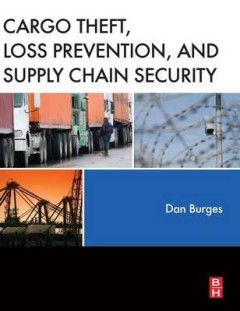
Cargo Theft, Loss Prevention, And Supply Chain Security
Part history of cargo theft, part analysis and part how-to guide, this book is the one source you need to in order to understand every facet of cargo theft and take steps to prevent losses. It supplies a massive amount of cargo theft statistics and provides solutions and best practices to supply chain security. Providing you with cutting-edge techniques so you can prevent losses, this book will…
- Edisi
- -
- ISBN/ISSN
- 978-0-12-416007-1
- Deskripsi Fisik
- xx, 366p. ; 25cm.
- Judul Seri
- -
- No. Panggil
- TXT LO BUR c C.1
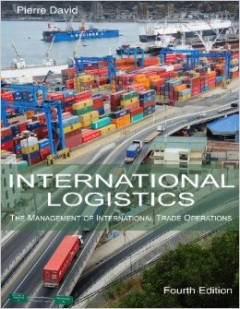
International Logistics: The Management of International Trade Operations
A full-color textbook covering all of the concepts of international logistics. This textbook is written from the perspective of the users, those managers who are actively exporting or importing goods or are otherwise involved in international trade operations. All of the relevant issues are thoroughly explained, including documentation, terms of payment, terms of trade (2010 Incoterms rules), e…
- Edisi
- 4th ed.
- ISBN/ISSN
- 978-0-9894906-0-3
- Deskripsi Fisik
- xxvi, 695p. ; 28cm.
- Judul Seri
- -
- No. Panggil
- TXT LO DAV i
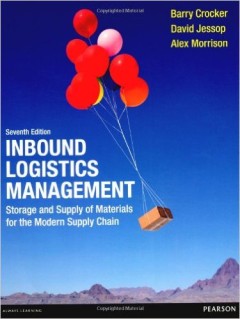
Inbound Logistics Management : Storage and Supply of Materials for the Modern…
This well-established text provides an authoritative and comprehensive overview of the practice and supporting systems relating to the storage and supply of materials, from elementary principles and simplest methods to the most advanced automated operations. It is an invaluable guide to inbound logistics for both students and practitioners.
- Edisi
- 7th ed.
- ISBN/ISSN
- 978-0-273-72048-5
- Deskripsi Fisik
- xviii, 317p. ; 25cm.
- Judul Seri
- -
- No. Panggil
- TXT LO CRO i C.1
 Karya Umum
Karya Umum  Filsafat
Filsafat  Agama
Agama  Ilmu-ilmu Sosial
Ilmu-ilmu Sosial  Bahasa
Bahasa  Ilmu-ilmu Murni
Ilmu-ilmu Murni  Ilmu-ilmu Terapan
Ilmu-ilmu Terapan  Kesenian, Hiburan, dan Olahraga
Kesenian, Hiburan, dan Olahraga  Kesusastraan
Kesusastraan  Geografi dan Sejarah
Geografi dan Sejarah